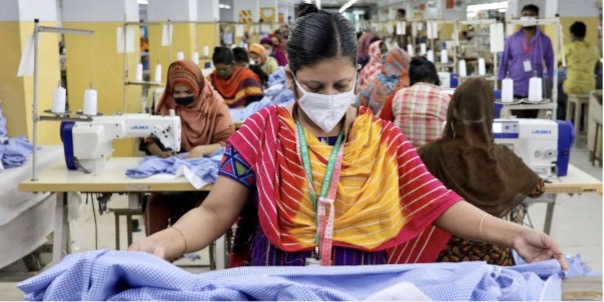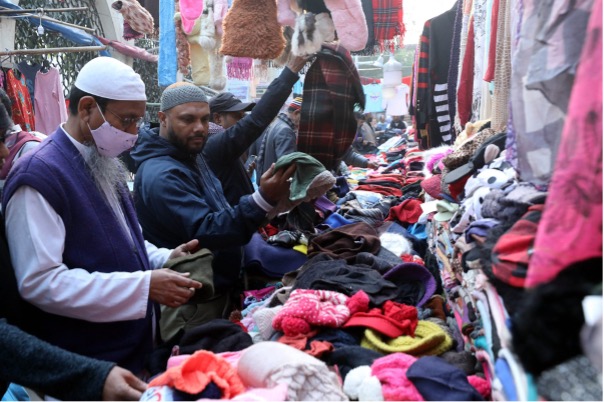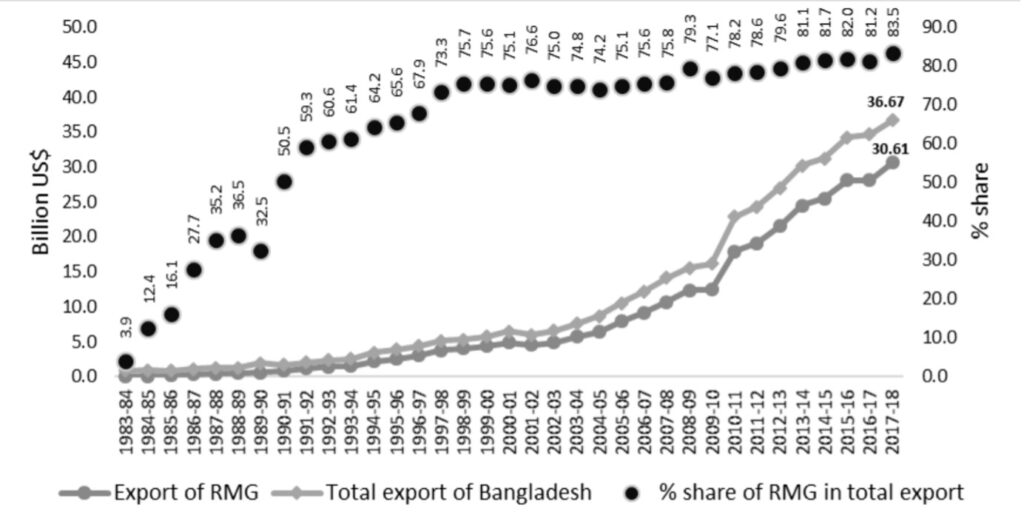In recent times, Bangladesh has emerged as an exceptional and somewhat surprising success story in the vast landscape of Asia. It is important to highlight here, that Bangladesh’s history wasn’t always this promising. Once upon a time, it was part of Pakistan, and was considered one of the poorest regions. Even after gaining independence in 1971, Bangladesh continued to grapple with severe poverty and recurring famines did not make it any easier for them. In fact, by the time 2006 rolled around, things seemed so bleak that when Bangladesh recorded faster economic growth than Pakistan, it was initially dismissed as a mere coincidence. However, 2006 would go on to mark a significant turning point.
Though over the past decade, Bangladesh has consistently maintained an average economic growth rate of more than 6 percent. This robust growth has not only significantly boosted the country’s per capita income but has also led to a continuous decline in poverty. Moreover, various social indicators, such as gender equality in education and maternal mortality rates, have shown considerable improvement. Throughout this transformative process, Bangladesh has shifted its economic focus from agriculture to a more manufacturing-oriented approach, with substantial growth in the ready-made garment industry.

Since then, Bangladesh’s annual GDP growth has consistently surpassed that of Pakistan, by roughly 2.5 percentage each year. Additionally, with a lower annual population growth rate of 1.1 percent compared to Pakistan’s 2 percent. Bangladesh’s per capita income has been growing at a much faster rate—approximately 3.3 percentage points higher each year. As is often the case, with major historical shifts, there are no definitive answers, only clues. However, it’s safe to say that a significant driver behind Bangladesh’s economic makeover has been the positive changes in its social fabric, starting with the empowerment of women.
Thanks to the commendable efforts of non-governmental organizations like Grameen Bank and BRAC, along with more recent governmental initiatives, Bangladesh has made substantial strides in educating girls and elevating the status of women.
These endeavours have translated into tangible improvements in the health and education of children. Today, the average life expectancy of Bangladeshis stands at an impressive 72 years, surpassing that of Indians (68 years) and Pakistanis (66 years).
Another key factor contributing to Bangladesh’s upward trajectory has been the success of its garment manufacturing sector. This success, in turn, is attributed to several factors. One notable aspect is the size of the main garment companies in Bangladesh, especially when compared to those in India. This is largely due to differences in labour laws.
While labour markets require regulation, India’s 1947, ‘Industrial Disputes Act’ places significant restrictions on companies’ ability to hire workers and expand their workforce. Ironically, this law was enacted just a few months before India and Pakistan gained independence from British rule in August 1947. However, Pakistan’s military government growing impatient with trade unions from the region, that would later become Bangladesh, repealed this law in 1958.
Consequently, Bangladesh, born without this law, offered a more favourable environment for manufacturing firms to achieve economies of scale and create a substantial number of jobs. Despite the need for stronger regulation to safeguard workers from occupational hazards, the absence of a law explicitly limiting labour market flexibility has proven to be advantageous for job creation and manufacturing success in Bangladesh.

For Bangladesh to sustain this momentum, it must prioritize productive investment by addressing infrastructure bottlenecks and fortifying the banking sector, according to the International Monetary Fund’s (IMF), annual assessment of the country’s economy in April 2021; a World Bank report titled ‘Bangladesh Development Update – Moving Forward: Connectivity and Logistics to Strengthen Competitiveness’ offered an optimistic outlook for Bangladesh’s economy despite the uncertainties generated by the COVID-19 pandemic. The report commended Bangladesh for its robust response to the pandemic, including the implementation of numerous stimulus packages to maintain employment levels despite the economic shocks.
The global perception of Bangladesh has undergone a remarkable shift in recent years. Previously viewed as a symbol of poverty and hunger, it has now transformed into a beacon of diligent enterprise, exemplified by its steady GDP growth. Witnessing a South Asian nation that was once labelled a ‘basket case‘ by Henry Kissinger being projected as a future ‘Asian tiger’ during his lifetime is indeed gratifying.
IMF projects that Bangladesh’s per capita GDP in dollars was expected to grow by 4% in 2020 to $1,888, while India’s per capita GDP was predicted to decline by 10.5% to $1,877, which left many Indians astounded. However, this shouldn’t have been surprising. Even before the COVID-19 pandemic, India’s GDP had been consistently dwindling, from 6.8% in 2017 to 6.53% in 2018 and further down to 4.04% in 2019, eventually plunging to -7% in 2020. On the contrary, in 2019, Bangladesh was the world’s seventh-fastest-growing economy, steadily exceeding an 8% growth rate. This achievement was remarkable, considering the fiscal pressures stemming from factors such as donor fatigue due to the Rohingya crisis and revenue shortfalls, attributed to an outdated tax administration. Notably, even in the fiscal year 2020, when economies worldwide contracted due to pandemic-induced lockdowns, Bangladesh managed to maintain an impressive growth rate of 5.24%. In the fiscal year of 2021, its average per capita income stood at $2,227, surpassing India’s $1,947.

At the core of Bangladesh’s economic success is macroeconomic stability. Over the last 50 years, Bangladesh’s economy has grown a staggering 271 times. Focusing primarily on its traditional labour-intensive light manufacturing industry, Bangladesh now stands as the world’s second-largest clothing exporter, trailing only behind China. This success is rooted in a traditional development strategy of export-oriented industrialization (EOI), a policy that was famously executed with great success by the Asian Tigers.
The majority of Bangladesh’s exports revolve around the textiles, apparel, and footwear industry, known for its heavy reliance on unskilled and semi-skilled labour. This economic performance also reflects Bangladesh’s prudent fiscal management, characterized by keeping the budget deficit to 5.0% of GDP or less. Restricting public spending has provided room for the private sector to borrow from the financial system and invest, which, in turn, has played a pivotal role in reducing poverty. One noteworthy development in Bangladesh is the inclusion of cottage-sized creative endeavours in the Micro, Small, and Medium-sized Enterprises (MSME) category. These entities create direct employment opportunities for 7.8 million individuals and contribute a significant 25% to Bangladesh’s GDP.
Each category within the MSME sector is treated differently, recognizing their unique characteristics. Bangladesh’s confidence in managing CMSME’s is reflected in its recent decision to finance the UNESCO-approved ‘Bangabandhu Sheikh Mujibur Rahman International Prize for the Creative Economy.’ This initiative aims to recognize outstanding projects that promote the engagement of young people in the creative economy, an effort aligned with Bangladesh’s vision. Relative to its GDP, Bangladesh’s stimulus package has been notably larger than that of India. Even while maintaining a preference for fiscal prudence, Sheikh Hasina’s government administered generous stimulus packages and social protection schemes, with a particular emphasis on supporting the agriculture sector. Various incentives were extended to small and medium-sized enterprises (SMEs), heavy industries, the ready-made garment (RMG) sector, and other industries, often in a phased manner.

Bangladesh’s commitment to ‘Digital Bangladesh,’ which aims to create a digital ecosystem through platforms like- Shujog.xyz. It has been instrumental in supporting new entrepreneurs and involving them in digital finance management. With nearly two dozen COVID-19 stimulus packages, the country allocated an overall outlay of 1.24 trillion Bangladeshi taka, equivalent to 4.44% of its GDP. These packages included measures such as providing 50 billion Bangladeshi taka to, export-oriented industries for covering three months’ worth of wage bills, offering two-year loans to factory owners at a low 2% interest rate, allocating 200 billion Bangladeshi taka for banks to provide working capital loan facilities to CMSMEs at an interest rate of 9%, with 4% borne by borrowers and 5% subsidized by the government. The success of these stimulus measures can also be attributed to their effective management, as they simultaneously aided affected industries while addressing food security issues faced by vulnerable populations.
It’s worth noting that the coronavirus pandemic had a profound impact on the economies of all nations, leading to a decrease in per capita incomes. However, Bangladesh’s ability to effectively manage the crisis can be attributed to its prior experiences in handling various disasters, such as floods and cyclones. With a population of 168 million people, Bangladesh has fared relatively better, thanks to timely economic stimulus packages, well-thought-out cash incentives, a rebound in exports, and strong remittance inflows. Despite its large population, Bangladesh stands as a positive example and an outperformer in the Asian region, a testament to its enduring economic resilience and adaptability.
In conclusion, Bangladesh’s journey from economic struggle to prosperity is a remarkable story of resilience, adaptability, and strategic transformation. With prudent fiscal management, a focus on labour-intensive industries, and a commitment to empowering women and small businesses, Bangladesh has not only defied expectations but has emerged as a promising force in the global economic landscape.
Written by – Tatha Biswas
Edited by – Mrunmayee Patwardhan
